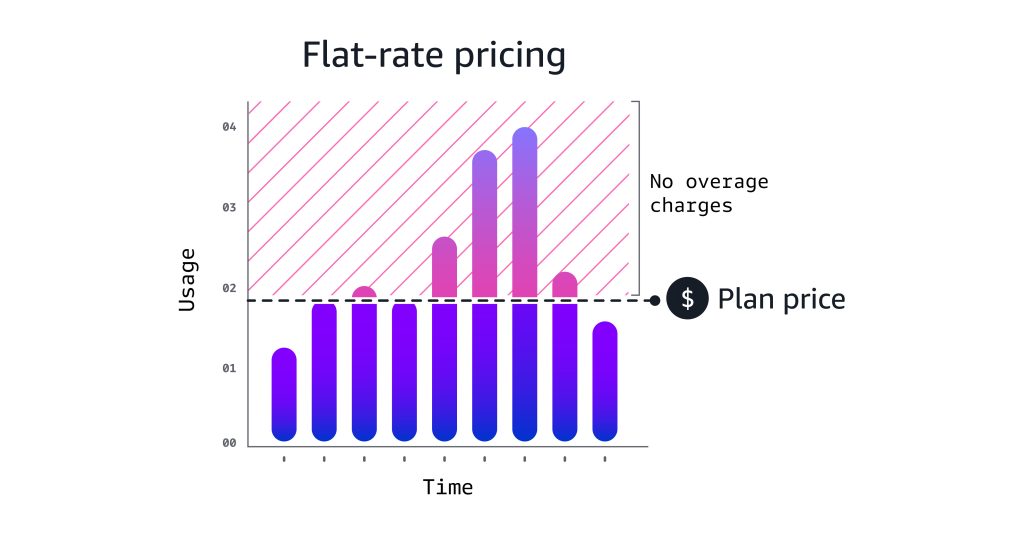Networking & Content Delivery
Tag: Amazon Route 53
Announcing Amazon Route 53 Accelerated Recovery for managing public DNS records
AWS announced the launch of accelerated recovery for managing public Domain Name System (DNS) records, a new Amazon Route 53 feature that targets a 60-minute Recovery Time Objective (RTO) for your DNS operations in the unlikely event of service disruptions in the N. Virginia Region (us-east-1). This feature ensures continuity for your critical workloads by […]
Introducing flat-rate pricing plans with no overages
Today, Amazon Web Services (AWS) is launching flat-rate pricing plans with no overages for website delivery and security. The pricing plans, available with Amazon CloudFront, combine global content delivery (CDN) with multiple AWS services and features into a monthly price with no overage charges, regardless of whether your website or application goes viral or faces […]
Boost application performance: Amazon CloudFront enables HTTPS record
Amazon CloudFront announced support for Amazon Route 53 HTTPS DNS alias record across its global network, enabling clients to discover the optimal HTTP protocol during the initial DNS resolution phase rather than in a subsequent connection step. This helps users improve performance and security, and simultaneously reduce operational expenses. This post explores the implementation details, […]
United Airlines implement enterprise-wide resilience program with AWS
This blog is co-authored with Jenny Zhou, Principal Enterprise Architect at United Airlines In this blog, we will explore how United Airlines implemented an enterprise-wide resilience program using Amazon Web Services (AWS). United Airlines, a major U.S. airline headquartered in Chicago, Illinois, announced its United Next plan in 2021. United Next is the airline’s plan […]
Load Balancer Migration to AWS: Recommended Strategies and Best Practices
In today’s world, organizations are increasingly looking to migrate their on-premises infrastructure to the cloud to take advantage of scalability, cost-effectiveness, and agility offered by cloud. One critical component of many enterprise architectures is the load balancer, which distributes incoming traffic across multiple servers. If you’re considering migrating your on-premise hardware load balancers to AWS, it’s […]
How Northwestern Mutual optimized and improved efficiency with Amazon Route 53 Profiles
Managing DNS configurations across multiple Amazon Virtual Private Clouds (Amazon VPCs) and Amazon Web Services (AWS) accounts can be a daunting task for network administrators, especially in complex environments with numerous Private Hosted Zones (PHZs) and Amazon Route 53 Resolver rules. Traditionally, they relied on outbound and inbound Route 53 Resolver endpoints to transport DNS […]
Encrypt DNS queries using DNS-over-HTTPS (DoH) with Amazon Route 53 Resolver Endpoints
Customers frequently use on-premises DNS infrastructure to resolve DNS queries for internal domains. In 2018, we announced Amazon Route 53 Resolver endpoints, which enable customers to integrate Route 53 with their on-premises DNS infrastructure for hybrid DNS resolution. In 2023, we improved this integration by providing customers the ability to encrypt DNS queries and responses […]
How to achieve DNS high availability with Route 53 Resolver endpoints
This post assumes a certain level of technical knowledge, including familiarity with DNS terminology, Wireshark, and Amazon Route 53 Resolver endpoints. Introduction The Domain Name System (DNS) is a critical service underpinning nearly the entire internet. As nearly every application begins with DNS resolution, a highly available and performant DNS architecture is crucial for application […]
Introducing dual-stack without public IPv4 Application Load Balancer
In May 2024, Amazon Web Services (AWS) launched a new feature for internet-facing Application Load Balancers. This enhancement allows you to provision an internet-facing Application Load Balancer without needing public IPv4 addresses, enabling clients to connect using only IPv6 addresses. To connect, clients resolve the AAAA DNS records assigned to the Application Load Balancer. The […]
Using latency-based routing with Amazon CloudFront for a multi-Region active-active architecture
An update was made on April 11th, 2024, outlining deployment procedure. This post guides you through setting up the networking layer for a multi-Region active-active application architecture on AWS using latency-based routing in Amazon Route 53 with Amazon CloudFront to deliver a low-latency, reliable experience for your users. Building active-active architectures using AWS networking services improves […]








